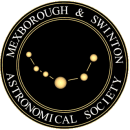Stars & Planets on the run.
Guest Speaker
Thursday, 13th August 2020 (19:45 - 22:00)
Venue: Virtual Meeting
Most stars form in grouped or clustered environments with other stars. These stars-forming regions can survive millions of years, but can change dramatically over just a short period of time - either collapsing under their own gravity or expanding. So what we see today might not be what they looked like initially when they formed. While a cluster is contracting or expanding, stars can pass very close to each other. This can lead to stars being flung out of the cluster to become runaway stars, as well as planets being ejected from their orbits and even swapped between stars. In this talk we will discuss how simulations and observations are used to investigate these interactions in young star-forming regions.
Â
Christina will talk about how the number and distribution of runaway stars can tell us something about the initial conditions of these regions. And how observations from telescopes like Gaia, which orbits in space with the Earth around the Sun, can be used to search for these ejected stars in the night sky. Emma will talk about how close encounters with other stars can affect exoplanets, as well as how this is relevant to our own Solar System.
Speaker: Dr. Emma Daffern & Dr Christina Schoettler
Emma:
- Final-year PhD student at the University of Sheffield
- Has previously investigated the way in which star clusters evolve as fractals over time.
- Is now focussing on the effects that star-forming regions can have on the planets within them.
- Finished her MPhys in Physics & Astronomy at the University of Sheffield 3 years ago, and is planning on leaving academia to work as a Data Scientist.
Christina:
- Final-year PhD student at the University of Sheffield
- Her work focuses on star formation and what we can learn from young star-forming regions using simulations and observations
- Came to Astronomy later in life after working in industry for 15 years until 2017
- Studied Physical Science for her Bachelor of Science at the Open University (via distance learning) from 2009-2014
- Studied Astrophysics for her Master of Science at Liverpool John Moores University (via distance learning) from 2015-2017
- Started her PhD full-time at the University of Sheffield in 2017 and will finish it in 2021 to continue working in academia
